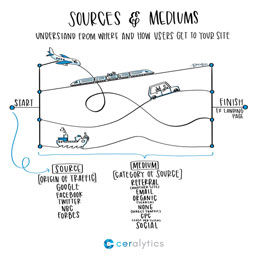Our Chief Strategist is using buyer personas to build a product and content that will truly meet our clients’ needs, we interviewed Brandon to understand the impact of those audience insights (this is part 2 of a 2 part blog post).
If you missed it, part one of this post was Creating buyer personas.
Q: What was your biggest “a ha” from the buyer persona process? Why?
A: A big “a ha” for me was speaking to CMOs and hearing their frustrations that CEOs expect them to be able to measure everything and that they don’t feel it can be done. I spoke to very data-centric CMOs but they all had the same feeling – you need to measure the essentials, but you can’t measure every single piece of marketing.
Q: What was the first action you took once you completed the personas?
A: I took a break. 🙂 Taking a step back helped me balance the nitty gritty needs of each persona with the bigger picture. This perspective is what I needed to then build out a high-level marketing strategy. The key questions I answered were: Who would be the ideal person/company to buy this product? What were the remaining barriers those people/companies would have before making a purchasing decision? I then went back to the product and tried to take some of those barriers out of the product itself, those that I didn’t remove are areas which I know will need to be address through content.
Q: How did you figure out what audience insights to take action on first?
A: Anytime I heard someone say something definitive, like “I can’t” or “We won’t”, I noted it and made those the top insights to address. Most were barriers that we had to address in the product itself. Others were addressed as part of the marketing strategy.
Q: What is the biggest change to the product you plan to make in response to the insights you gathered?
A: We initially thought the product setup would be very hands on but, after gathering more insights, we realized we needed to make it as easy to implement as possible. We learned that it was important to our buyers that set up didn’t require adding code to their organization’s website. Large organizations are especially sensitive, as vendor mistakes can result in a slow site experience or (at an extreme) a total website outage. If sales are reliant on the website for leads, a seemly innocent vendor script can directly impact the company’s bottom line. We are doing everything we can to ensure our product is built in a way that minimizes all of these risks.
Q: What audience information is currently missing from your personas? Once you can pull those insights, how will that impact our product and content?
A: Everything we initially did was one-on-one feedback. My next step will be to administer a survey to get a broader swath of data. This will help us test the assumptions we made from our 1-on-1 interviews and ensure our personas are true representatives of groups of buyers versus a picture of one single buyer.
Q: How will you continue to build on and refine the buyer personas in the future?
A: First and foremost, we will be setting regular feedback meetings with our beta testers to ensure the development of the product evolves with their needs. Then on the buying personas, we need to keep the data accurate as time goes on. A process of continuous feedback from certain clients and regular surveys will help us make those updates.


